Named in the memory of Fred Best who founded the Croydon Astronomical Society at his home in 1956. It is said that it took 18 years to build... An inch a year! Norman Fisher (ex-chairman of the CAS who sadly succumbed to cancer in 1994) was without doubt the driving force behind the project. Without his time and effort there would be no Kenley Observatory today. The engineering work was done by Gordon Main in his home workshop and at no expense regarding his time to the society. Due to the intensity of the project, his health and marriage suffered the consequences. I knew them both well and will always hold the greatest respect for them.
Many people were involved with the optics, notably F.J. Hargreaves who procured the 18 inch mirror blank and who's company Optical Surfaces in Kenley did the grinding and figuring. I recall Norman telling me that the Cassegrain secondary mirror was later re-figured by Horace Dall. He along with Hargreaves were probably the finest opticians in the UK during the 20th century. I maintained the telescope's electronics up to when I left the UK in 1986.
The telescope was novel in that it had two optical arrangements. It could be used as a Newtonian (F4) or as a Cassegrain-Nasmyth (F20). The latter bringing the focus out through the east fork of the declination axis. Moving between foci simply involved changing the optical element at the top end of the tube, either the Newtonian flat or the Cassegrain secondary mirror. I used the telescope many times at both foci, but my most memorable night was visually observing the Orion Nebula (M42) at the F20 focus. The fine filamentary detail was amazing with an effect like a 3D view through the nebula.
Due to advancements in telescope design and control, the CAS sold off the FBT in March 2005 much to the dismay of some of the older/ex membership (me included) and now have a Meade LX200 14 inch SCT installed in the Kenley Observatory (now renamed the Norman Fisher Observatory). I sincerely hope the new owner appreciates what a classic telescope they have and of the toil and effort of those people who brought the project to completion. (Photos taken during a visit in 1993)
INAUGURATION DAY AT THE KENLEY OBSERVATORY 30th June 1979
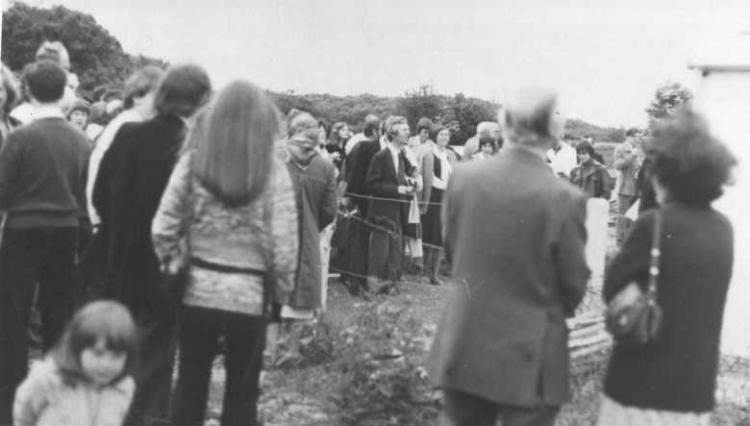
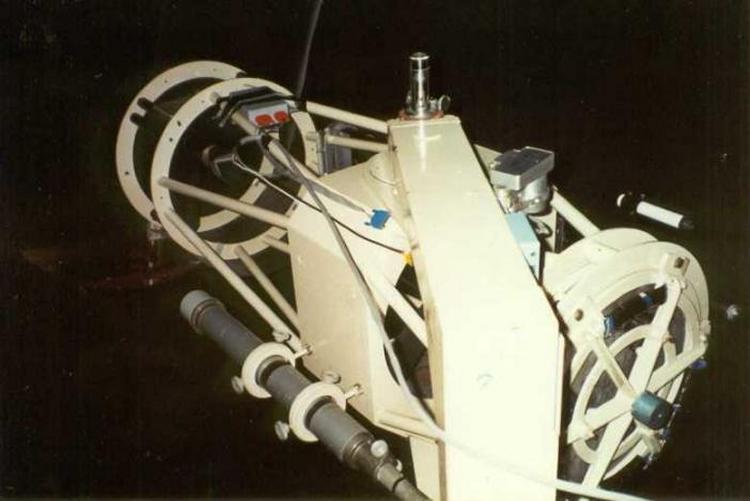
A GENERAL VIEW OF THE TELESCOPE
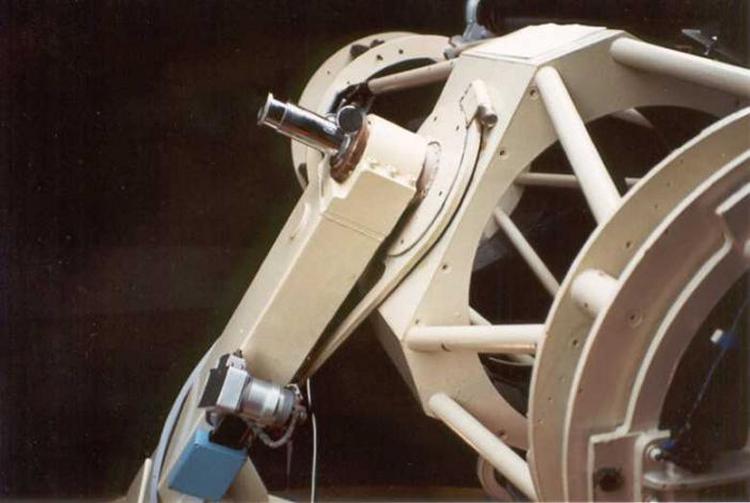

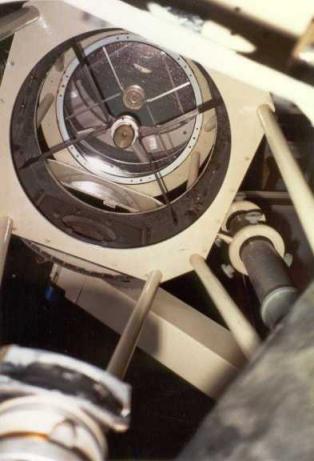
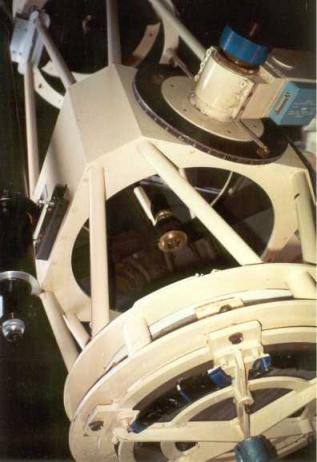
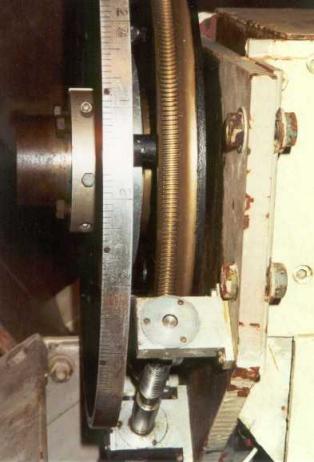

The worms driving the main wheel are themselves driven through a worm. The worms were carefully adjusted so that one acted on the leading edge of a main wheel tooth, the other on a trailing edge. This effectively removed most of the backlash from the system which would have been much greater using a single worm drive.

